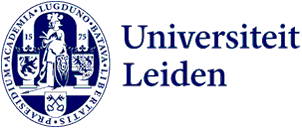Lecture
L(SB)2 Seminar: Combining experiments with AlphaFold2 to characterize new histones in prokaryotes
- Date
- Thursday 20 February 2025
- Time
- Location
-
Gorlaeus Building
Einsteinweg 55
2333 CC Leiden - Room
- BE.0.18
We would like to invite you to a new seminar series that aims to bring together all researchers in Leiden that are interested in biophysics and structural biology. L(SB)2, the Leiden Seminars in Biophysics and Structural Biology, takes place monthly and combines presentations of talented PhD students from Leiden University with talks of PIs from other Dutch or international universities. We hope to see many of you there!
Abstract
Histones are important chromatin-organizing proteins in eukaryotes and archaea. They form superhelical structures around which DNA is wrapped. Recent studies have shown that some archaea and bacteria contain alternative histones that exhibit different DNA binding properties, in addition to highly divergent sequences. These new findings suggest more histones might exist with alternative DNA binding properties.
The revolutionary breakthroughs in in silico protein structure prediction by AlphaFold2 and RoseTTAfold allow for unprecedented insights into the possible function and structure of currently un-studied proteins. We categorize the complete prokaryotic histone space into 17 distinct groups based on AlphaFold predictions, providing an all-encompassing structural view of the prokaryotic histone world. The majority of prokaryotic histones and histone variants do not form nucleosomal structures, underlining the ’generality’ of alternative DNA binding properties within histone-variant families as shown in experimental studies. Additionally, we confirm experimentally that one bacterial and two new archaeal histone families do not form nucleosome-like structures. Importantly, we establish the existence of, and confirm experimentally, a large family of histones throughout archaea that, instead of wrapping DNA, bridge DNA, thereby diverging strongly from conventional nucleosomal histones.
